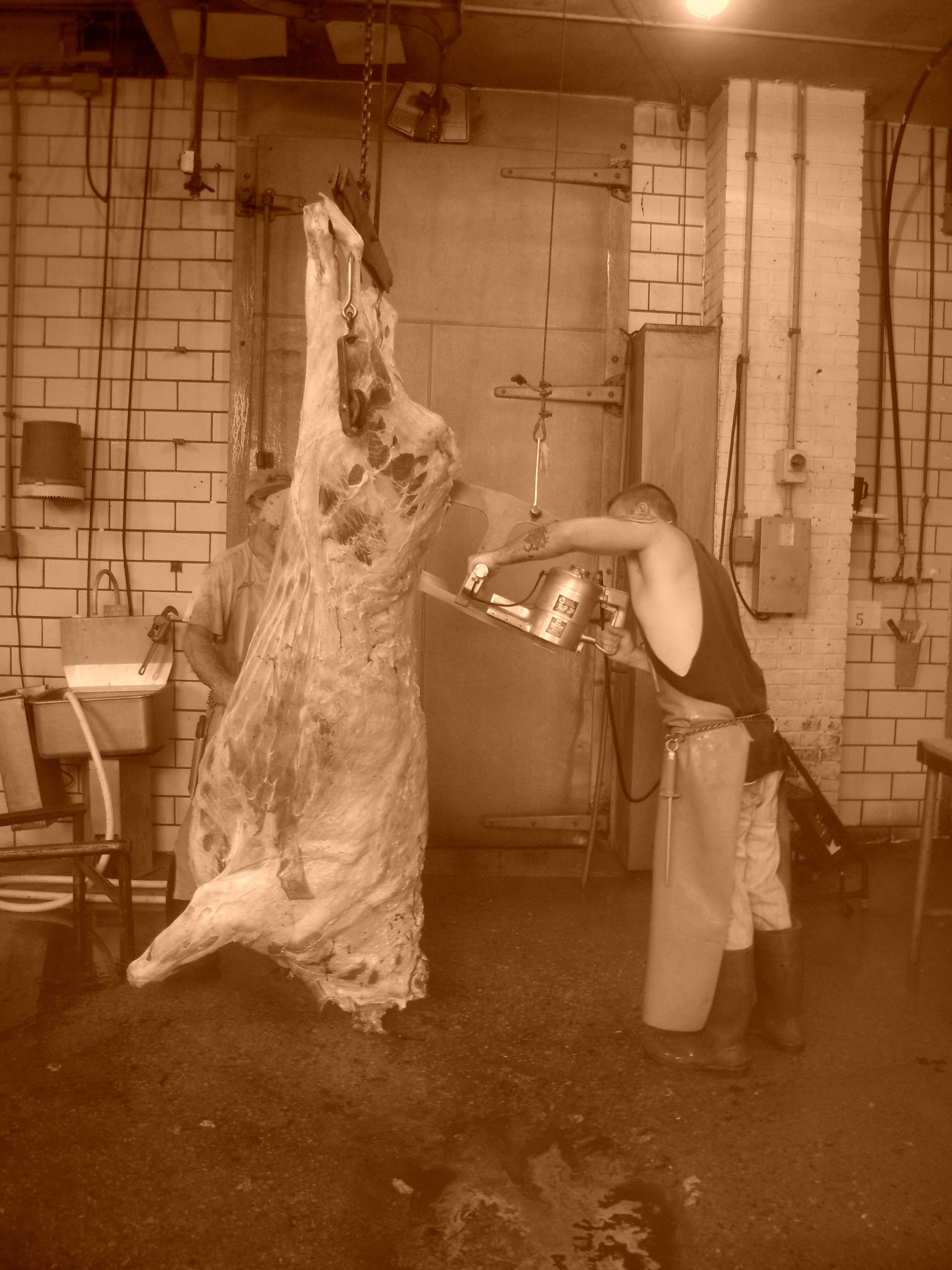‘to understand is to experience the harmony between what we aim at and what is given, between the intention and the performance – and the body is our anchorage in a world’ (Merleau-Ponty, 1962: 144)
An 800 pound beef hangs, suspended from the rail above our heads. Cooper has already removed the animals 'clothes,' or hide, and pulls down the chainsaw from overhead to divide the carcass into sides. The young man is barely 22 and hails from a tiny town nearby called Darlington. He has been working with the Moody family, who owns the facility, since he was a small child feeding hogs on the Moody farm. Cooper's biceps bulge from heaving the weight of flesh and entrails and he is dappled in sweat though the room is cool. His tattooed forearms display sinewy stripes that come from the near-daily use of guns, knives and saws. A pristinely honed knife sits bloodless in its holster; he is able to drain a half ton animal with one clean plunge of the blade.
The body can tell us much. The work of a farmer, a slaughterer and a butcher is programmed into this young man's figure. According to Mauss, and later Bourdieu, these dispositions are not necessarily conscious, but they are rather "techniques of the body," which, along with countless other environmental and biological factors, shape an individual’s habitus, or combination of physical and mental dispositions that a person has as a result of life experience and cultural context (Bourdieu 1977). Because Cooper's body is socially, historically and geographically contingent (Crossley 1993), this image provides a striking visual illustration of embodied forms and actions that are becoming increasingly rare in American society. Like many past bodies that have built our railroads, monuments and cities, modern technology and industry is making these bodies obsolete.
Like with all photos, this one "arrests the flow of time" leaving an ambiguous message open for interpretation (Berger 1972). What this photo does not tell us is the story of Cooper's desire to flee from the midwest. It does not tell of his young daughter and ex-girlfriend who require alimony. It does not reveal coworker's deftness despite being nearly blind, or the baritone cadence of the words " hey boss" that he repeats to calm the animal before slaughter. This photo does not tell the story of a man torn between two worlds, a rural world that has formed his body, mind and habitus, one that he slips into like it's a well-worn baseball mit, and an urban world where he holds a radiology degree and wears a crisp clean white uniform. For this reason Berger comments, "meaning cannot exist without development", and the beauty in the ambiguity of photography is the precise aperture for ethnographers to find their narrative voice (1972).
Berger, John. 1972. Ways of Seeing. Harmondsworth: Penguin/BBC Books.
Bourdieu, Pierre. 1977. Language and Symbolic Power. Harvard University Press: Cambridge, MA.
Mauss, Marcel. 2006. Techniques of the Body. In: Techniques, Technology, and Civilization. Ed. Nathan Schlanger. Durkheim Press: NY.
Merleau-Ponty, M. 1962. Phenomenology of Perception. Transl. C Smith. London: Routledge & Kegan Paul.
